2023: Frac Canada Dry!
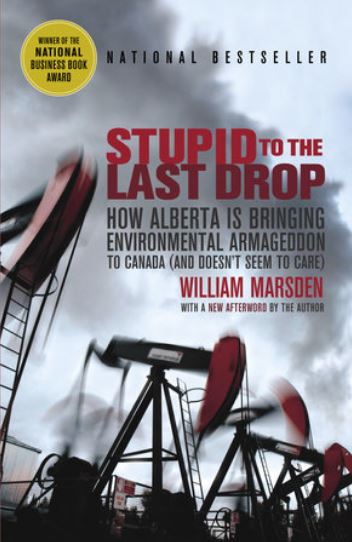
Not one mention of frac’ing (or enhanced oil recovery wasting water) in the article, not one.

“UnAlbertan” CougstaX@cougsta:
What antifa elemental will Danielle Smith blame this on?
@LiveWireCalgary:
UPDATED: It’s the first time in history Calgary has enacted outdoor water restrictions due to drought. #yyc #yyccc #calgary
‘More chaos’: Scientists say Calgary water restrictions a harbinger of a warming future, Calgary’s restrictions on outdoor water use come as no surprise to scientists who’ve been monitoring the rivers that quench the city’s thirst by Bill Kaufmann, Aug 16, 2023, Calgary Herald
Tricia Stadnyk said viewing the Bow River at Dead Man’s Flats near Canmore earlier this week left her with a deep sense of foreboding.
“I was astounded at how low it was,” said Stadnyk, Tier II Canada Research Chair in hydrologic modelling and associate professor with the department of geography at the U of C.
But that anxiety was elevated by monitoring the snow pack in the Rockies west of Calgary, an exercise that’s come to underscore how climate change is affecting the city’s water supply — and will more severely in the future, she said.
“It’s unprecedented — in May, the mountains were actually snow-free when there’d normally be some snow in July,” said Stadnyk, who collaborates with researchers from the University of Saskatchewan at a site at Fortress Mountain in Kananaskis.
Tuesday’s announcement by the city that it’s imposing outdoor water use restrictions for the first time in response to drought conditions came as no surprise to Stadnyk and other scientists who’ve been closely eyeing the ebbs and flows of the city’s water sources, which they say are increasingly strained by a changing climate and growing demand.
And they say those measures, and tougher ones, will likely become a more common reality.
City officials say the Bow River’s flow is the lowest it’s been since records were first kept in 1911, while the velocity of the Elbow River — the city’s other source of drinking water — hasn’t been this tepid in 23 years.
‘Longer drought periods interspersed by massive floods’
Last spring, the runoff into the rivers relieving Calgarians’ thirst was only 50 per cent of the norm, said Stadnyk.
“(Current readings) are telling — for the river to hit a new record is significant,” said Stadnyk, adding the Bow River has been monitored longer than any other Canadian counterpart.
“What we’re seeing now is the beginning of a more sustained pattern covering multiple years . . . unfortunately, we can expect more chaos and longer drought periods interspersed by massive floods.”
The U of C researcher said those local realities are just a piece of an extreme weather puzzle spanning the globe this year and in recent ones, and are exactly what scientists have predicted.
Stadnyk said she’s been feeding data collected by the UN’s Intergovernmental Panel on Climate Change (IPCC) into hydrology models, whose results are now playing out.
“What we’re seeing today has been projected for quite a while — I’ve always hoped I’ve been wrong, but I’m not,” she said.
City officials say they’re curtailing water use partly in anticipation of a milder, drier winter, with those conditions expected to continue into next summer.
A mid-June trip to the Athabasca Glacier with students left Stadnyk stunned.
“There was definitely not enough snow up there in the headwaters of the Bow River for mid-June — something we conveyed to the class as it was a bit shocking to see (conditions) more typical of late August,” she said.
Rocky Mountain glaciers shrinking lead to concerns over water supply
On Tuesday, Dr. John Pomeroy was hiking through Wilcox Pass near the Athabasca Glacier when he spotted something he was hoping he’d never see in the high alpine environment: small dust storms.
The University of Saskatchewan hydrologist said this, along with now-regular wildfire smoke and fast-vanishing glaciers, are testaments to accelerating climate change and a warning to Calgarians and those downstream.
“We’ve lost dozens of glaciers in the upper Bow since the 1970s, and a third or half of (their total mass) since the beginning of the 20th century,” said Pomeroy.
Glaciers typically discharge three per cent of the river runoff for downstream Calgary and act as a reservoir that backs up the city’s water supply, particularly in the late summer and fall when groundwater and precipitation sources are spent.
Now, he said, “the glaciers are much smaller than they were . . . it’s not good.”
The impacts of dwindling river flows are being felt even harder downstream from Calgary, in farming districts and reservoirs in Saskatchewan, said Pomeroy. Even hydroelectric production in Manitoba will be feeling the squeeze, he added.
Looking at the broader picture of climate change effects, such as those plaguing Europe, “it’s highly likely we’re experiencing global heating — it’s what a lot of the 21st century will look like in the city,” said Pomeroy.
Climate change’s signatures of flash flooding and dry conditions were both evident in 2013, he said.
“2013 would have been a drought year if it hadn’t been for that (flooding) rain,” said Pomeroy.
Calgary’s move to limit most outdoor watering to one day a week “is pretty mild, actually,” said Dr. David Sauchyn, a University of Regina geography and environmental studies professor.
The academic, who’s helped the city craft its drought-resiliency policy — an updated version of which is expected to go to council this fall — said the low levels of the Bow and Elbow are ominous given the strong likelihood a warming climate will only worsen the condition.
Preparations for drought can only do so much, expert warns
His studies using tree ring evidence dating back more than 1,000 years suggest there were exceptionally low water flows prior to European settlement, but added that shouldn’t be a reason for complacency.
“It’s happening now in a warmer climate, so you can expect the impacts to be worse. When you impose climate change, the likelihood (of drought) is even greater,” said Sauchyn.
“Droughts aren’t caused by climate change but summers are getting longer on the Prairies with more warm days . . . we’re in a situation where we’re having more dry years than normal years.”
Calgary’s drought preparations, he said, are ahead of many jurisdictions and have reduced per-capita water use by 30 per cent over 20 years, “but you can only manage supply to a certain extent.”
One way to mitigate coming dry years is to improve large-scale storage, said Sauchyn, a strategy the provincial government is pursuing on the Bow River upstream of Calgary.
A feasibility study on three options for reservoir sites is expected to be completed at the end of this year.
Sauchyn said more should also be done at the household level to use captured rainwater.
“It’s crazy to think we use treated water for our lawns and to wash cars,” ![]() Totally crazy. My lawn and vehicle get rain, and only rain. If it doesn’t rain, they go without.
Totally crazy. My lawn and vehicle get rain, and only rain. If it doesn’t rain, they go without.![]() he said.
he said.
For more information on Calgary’s current water restrictions, go to calgary.ca/restrictions
email hidden; JavaScript is required
Twitter: @BillKaufmannjrn
City of Calgary Stage 1 water restrictions: what you can and can’t do
Watering lawns
- Once per week for a maximum of two hours, from 4 to 7 a.m., 9 to 11 a.m. or 7 to 10 p.m.
- Wednesday or Saturday for even-numbered addresses.
- Thursday or Sunday for odd-numbered addresses.
Acceptable outdoor water use
- Watering gardens, shrubs and trees using a watering can or a hose/wand that shuts off when not being used.
- Watering new sod, with limitations.
- Filling pools, wading pools, hot tubs. Take measures to prevent evaporation.
- Using water for construction.
Prohibited outdoor water use
- Washing a car on the street or a driveway. It’s OK to take your vehicle to a car wash.
- Filling fountains or decorative water features.
- Washing sidewalks, driveways and walkways.
- Washing exterior windows.
![]() At least there are some comments raising abuses of our water by frac’ers, many of them foreign owned multinationals:
At least there are some comments raising abuses of our water by frac’ers, many of them foreign owned multinationals:![]()
J Randall Murphy:
Once again city residents are under restrictions while frackers drain entire lakes full of fresh water down into the Earth’s crust where it’s polluted and taken out of nature’s water cycle virtually permanently. But I guess we dare not say anything bad about the energy industry ( right )?
… Clean fresh water is a natural resource we’ve taken for granted for far too long, and whatever the causes of climate change, people need to figure out a solution for the dwindling supply.
Phil Holmes to J Randall Murphy:
Yup. It should be criminal that billions of litres of fresh water have been used to extract oil and not just from shale. We could learn to live without oil. We can’t live without water. But get ready for the thumbs downers.
Nelly Uidhir:
An increasing population means an increasing demand on a finite supply. It is not an infrastructure issue.
Calgary orders Stage One water restrictions, Bow River is at the lowest level since 1911 by Darren Krause, August 15, 2023, Livewire Calgary
The City of Calgary will impose water restrictions due to ongoing drought conditions in the area.
Calgary is currently under a heat warning, which means that daytime highs are between 30 to 35 degrees with overnight lows in the mid-teens. These warnings are issued when high temperatures can pose an elevated risk of heat illnesses such as heat stroke or heat exhaustion.
In late July, the City asked citizens to voluntarily reduce water use. They said at the time that further restrictions may be needed if drought conditions continued.
“Because we continue to see dry conditions and record-level low flows in the Bow and Elbow Rivers,” ![]() There are massive fracs in many parts of Alberta, including near Priddis. I expect water raping of the Elbow River and water hoarding by frac’ers is being done similar to raping of the Bow River to hoard for frac’ing (some photos below)
There are massive fracs in many parts of Alberta, including near Priddis. I expect water raping of the Elbow River and water hoarding by frac’ers is being done similar to raping of the Bow River to hoard for frac’ing (some photos below)![]() said Nicole Newton, Manager of Natural Environment and Adaptation.
said Nicole Newton, Manager of Natural Environment and Adaptation.
“We are now moving the drought dial to very low and declaring outdoor watering restrictions at Stage One.”
Newton said this is the first time in Calgary’s history that Stage One water restrictions have been enacted because of drought. They were last implemented in 2005, but it was due to flooding at the time.
On the Elbow River, it’s the lowest flow since 2000, and the lowest on the Bow River since 1911. Newton said low snowpack and earlier-than-normal snow melt are contributing factors to the low flow.
“It is not normal for this time of year. I’m not sure I want to say unprecedented but I do think that there are some historical lows that are taking place and it will just depend on if we get the snowpack going into this winter and into next spring as well,” she said.
Newton stressed that this was a water quantity issue, not a water quality issue.
Chris Huston, manager of drinking water distribution, said the city monitors flow rates and that’s why it’s important that Calgarians stick with their specified dates for watering.
“We know what the daily demand is. Right now, it’s usually around 650 million litres per day is kind of the daily demand. We’re trying to get that down and so that’s why these restrictions are important,” he said.
Rules around using Calgary water
Under the city’s Water Utility Bylaw, the Director, Water Services can declare an outdoor water use restriction. The restrictions can be put in place for the entire City or for specific geographic areas of Calgary.
Under Stage One restrictions, Calgarians can only water lawns, gardens, trees and shrubs one day per week with a hose-connected sprinkler to a maximum of two hours between 4 and 7 a.m., 9 to 11 a.m. or 7 to 10 p.m.
Watering of gardens, shrubs and trees with an automatic shut-off connected hose is still allowed. You can also water newly planted sod or grass seeds (must have evidence of recent installation).
Watering of plants for commercial sale is also still allowed.
Citizens are also not allowed to wash sidewalks, driveways, exterior building surfaces, or other outdoor services, unless where needed due to health and safety regulations. Washing cars outdoors is also not allowed unless it must under health and safety regulations.
Manual window washing (except by licensed cleaning services) is also not allowed.
The City of Calgary has been limiting its water use as well, and with this next stage, the Parks and Open Spaces unit will reduce water usage by an additional 15 per cent, Newton said. Water parks will remain open for now, as will Olympic Plaza as it is an urban heat reduction area for Calgary’s vulnerable population.
The penalty for not abiding by the Stage One restrictions is up to a $400 fine.
Newton said, however, that they will take an education-first approach to enforcement. She said Calgary bylaw will be out patrolling neighbourhoods.
“Calgarians are encouraged to connect with their neighbours if they do see someone operating outside of the schedules,” she said.
“As an alternative, they can contact 311 and submit a request to have someone follow up with that individual.”
More information will be provided by the City of Calgary later this morning. More information on City of Calgary water restrictions can be found here or in the document below.
Amid drought conditions, Calgary restricts outdoor water use for homes and businesses, City of Calgary imposes limits on outdoor water usage including watering lawns, washing cars by Bill Kaufmann, Aug 15, 2023, Calgary Herald
Calgarians’ outdoor water use is being limited to two hours per week as the city faces continued drought conditions, officials announced Tuesday.
It’s the first time the city has imposed such restrictions due to dry conditions, with water flows in the Bow River at their lowest level since 1911 and the Elbow River since 2000, said Nicole Newton, the city’s manager of natural environment and adaptation.
“There are some historical lows that are taking place . . . so we’re taking proactive measures,” she said.![]() These are not proactive measures. Proactive measures would be to ban frac’ing, or, better yet, to have never allowed it anywhere in Canada, certainly not in dry provinces like Alberta, and not to allow the massive waste and contamination of water trying to mine/extract bitumen and coal.
These are not proactive measures. Proactive measures would be to ban frac’ing, or, better yet, to have never allowed it anywhere in Canada, certainly not in dry provinces like Alberta, and not to allow the massive waste and contamination of water trying to mine/extract bitumen and coal.![]()
While indoor consumption won’t be affected, residents and businesses are being instructed to only water their lawns, trees or shrubs one day per week, and only for two hours during that time.![]() Yet frac’ers frac 24/7! Beyond stupid.
Yet frac’ers frac 24/7! Beyond stupid.![]()
Watering flower gardens, trees and shrubs with a hand-held container or shut-off hose isn’t under prohibition, nor is the use of sprinklers for cool-down recreation.
Hours for outdoor watering are also being limited to times of less evaporation, from 4 to 7 a.m., 9 to 11 a.m., or 7 to 10 p.m., with the days of use being designated by their address. Addresses ending in even numbers can use water outdoors on Wednesdays and Saturdays, while for those ending in odd numerals, it’s Thursdays and Sundays.
Washing sidewalks, windows and vehicles in driveways, as well as filling fountains, is forbidden under the Stage 1 restriction.
The limitations were announced after the city of Calgary began reducing its own consumption of water in July.
The measures are being taken not only to address current dry conditions but in anticipation of lower precipitation and mild conditions in the coming winter, stated the City of Calgary’s website.
“We’re taking this measure because we continue to see dry conditions and record low natural flow levels on the Bow and Elbow Rivers,” the city said.
“Also, Environment Canada is predicting a warm and dry winter, so this is an important measure to help us sustain Calgary’s water supply in the Glenmore Reservoir through to the spring, as well as to support our neighbours and the river health downstream.”
Newton said Environment Canada is also predicting a dry summer next year, so the city is taking a “long-term” outlook on conservation.
The city says current conditions are rated as very dry, and the decision on restrictions is based on river flow, the monitoring of reservoir levels, weather and water demand.
The current restrictions are the first stage of four possible stages of mandatory water usage limitations.
The city said if the Stage 1 restriction doesn’t reduce water usage, stricter measures could be imposed, with a maximum fine of $400 for those who consistently flout the rules.
‘Education-first approach’ to enforcing new limits on outdoor water usage
City bylaw officers will be patrolling to enforce the measures, said Newton, adding penalties aren’t a priority.
“We do take that education-first approach — Calgarians are encouraged to connect with their neighbours if they do see someone operating outside of the schedules, as an alternative they can call 311 and submit a request to have someone follow up with that (offending) individual,” said Newton.
“We don’t want to be in Stage 1 any longer than we need to.”
Water consumption in Calgary is currently at 650 million litres a day and “we’re trying to get that down, so that’s why these restrictions are important,” said Chris Huston, the city’s manager of drinking water distribution.
City water features and splash parks will remain in operation because they’re considered an efficient use of water for the public good, say city officials.
Scientists have long predicted climate change would affect water supplies, with rapidly retreating glaciers in the Rockies being one factor in a reduced supply for downstream Calgary.
The mountain snowpack west of Calgary has been at below-normal levels this year and the melt began earlier, said Newton.
The City of Calgary has been updating its drought resilience plan to respond to a changing climate and increased water demand, while saying conservation measures have already significantly reduced the per-capita amount of use in recent year.Calgary is currently under a heat warning with temperatures forecast to be in the mid-30C or high-20C ranges over the next few days, until Friday, when the mercury is expected to dip into the teens with a chance of showers into the weekend
On Monday, heat records were broken in a number of southern Alberta communities, including Banff, which recorded 31.1 C.
More information on water use restrictions is available at calgary.ca/restrictions
email hidden; JavaScript is required
Twitter: @BillKaufmannjrn
City of Calgary Stage 1 water restrictions: what you can and can’t do
Watering lawns
- Once per week for a maximum of two hours, from 4 to 7 a.m., 9 to 11 a.m. or 7 to 10 p.m.
- Wednesday or Saturday for even-numbered addresses.
- Thursday or Sunday for odd-numbered addresses.
Acceptable outdoor water use
- Watering gardens, shrubs and trees using a watering can or a hose/wand that shuts off when not being used.
- Watering new sod, with limitations.
- Filling pools, wading pools, hot tubs. Take measures to prevent evaporation.
- Using water for construction.
Prohibited outdoor water use
- Washing a car on the street or a driveway. It’s OK to take your vehicle to a car wash.
- Filling fountains or decorative water features.
- Washing sidewalks, driveways and walkways.
- Washing exterior windows.
Calgary introduces outdoor water restrictions in response to drought conditions by Ryan White & Adam Toy Global News, Aug 15, 2023
The City of Calgary announced new restrictions on outdoor watering Tuesday morning.
“We continue to see dry conditions and record low natural flow levels on the Bow and Elbow Rivers,” explained Nicole Newton, Calgary’s manager of natural environment and adaptation. “Also, Environment Canada is predicting a warm and dry winter, so this is an important measure to help us sustain Calgary’s water supply in the Glenmore Reservoir through to the spring, as well as to support our neighbours and the river health downstream.”![]() Important measure indeed, but won’t succeed unless frac’ing is banned in Alberta. In past years in other towns and counties during severe droughts, residents were told to strictly conserve water while frac’ers – many of them not even Canadian – kept frac’ing, so much so, some communities didn’t have enough water for fire fighting.
Important measure indeed, but won’t succeed unless frac’ing is banned in Alberta. In past years in other towns and counties during severe droughts, residents were told to strictly conserve water while frac’ers – many of them not even Canadian – kept frac’ing, so much so, some communities didn’t have enough water for fire fighting.![]()
The flow on the Elbow, said Newton, is the lowest it’s been since around 2000 and the Bow River is the lowest it’s been since 1911.
Newton said Tuesday marked the first time the city has initiated water restrictions due to drought.
The Stage 1 restrictions include:
- Watering of lawns, gardens, trees and shrubs with a hose connected sprinkler will be reduced to once per week for a maximum of two hours, within specified time periods (4am- 7am, 9am-11am, and 7pm-10pm). House numbers ending with an odd number may water on Thursdays or Sundays, while houses ending with an even number may water on Wednesdays or Saturdays.
- Reducing watering programs for certified customers with a Tier One water managed system by 10 per cent and Tier Two water managed systems by 15 per cent.
- A ban on pesticide or fertilizer application that require potable water, unless exception granted by the director of water services.
- A ban on washing of sidewalks, driveways, exterior buildings walls except for child care facilities, food and beverage establishments, and animal care facilities that are required to do so under health and safety regulations.
- A ban on window washing except for licensed cleaning services.
- A ban on outdoor vehicle washing except for vehicles that must be cleaned under health and safety regulations.
- A ban on the filling of fountains and decorative features.
Under Stage 1, there will be no restrictions on:
- Watering gardens, trees and shrubs (but not lawns) using spring-loaded type nozzles with automatic shut-off hose connections or by hand using watering cans or buckets.
- Watering of new sod installed within the last 21 days or grass seeds planted within the last 45 days.
- Watering of plants for commercial sale.
Anyone found in violation may face a fine of at least $400.
Newton said the rain forecast for later in the week will be welcomed, but the measures announced Tuesday are meant to help address long-term water supply concerns.![]() Again, without banning frac’ing across Alberta, these measures will not help much in the long term. None of these water uses banned permanently remove water from the hydrogeological cycle the way frac’ing does.
Again, without banning frac’ing across Alberta, these measures will not help much in the long term. None of these water uses banned permanently remove water from the hydrogeological cycle the way frac’ing does.![]()
“Currently the long term forecast is indicating that we will experience a dry winter and potentially a hot and dry summer next year, so we’re taking actions in order to prepare for that in terms of managing our water supply today,” Newton said.
“I don’t think we want to be in Stage 1 one any longer than we need to.”
Edwin Cey, an assistant professor at the University of Calgary and head of the geoscience department, said spring arrived about a month earlier than normal this year, resulting in earlier melt of the snowpack from the mountains and peak in flow for the Bow and Elbow rivers.![]() Why isn’t he and others at U of C and U of A not calling for frac bans? Frac’ers like illegal aquifer frac’ing Encana/Ovintiv donate millions to keep them silent on what is vitally needed to protect water supply for all Albertans, and for livestock, fish and wildlife.
Why isn’t he and others at U of C and U of A not calling for frac bans? Frac’ers like illegal aquifer frac’ing Encana/Ovintiv donate millions to keep them silent on what is vitally needed to protect water supply for all Albertans, and for livestock, fish and wildlife.![]()
“Looking forward to water levels next year, again, the rivers themselves are really reliant on those mountain snowpacks,” Cey said, saying the region currently has a “buffer” to help endure current drought conditions.
Cey said hydrologists and climate scientists have warned about the effects of climate change on the Calgary region’s water supply: earlier melt events, earlier river peaks and flows.![]() while silent on industry’s insanely harmful frac’ing practices
while silent on industry’s insanely harmful frac’ing practices![]()
“A few good rainfall events and we might be just be back in a much better position or a good winter snowpack can do a lot,” he said. “And the concern is, if we start having several of these years back to back, we deplete the reserves — so then entities like the City of Calgary maybe can’t use the Glenmore Reservoir to manage the water system the way they would like.
“And that’s when it could really become problematic.”
Airdrie moves to Stage 2 restrictions
Airdrie, Alta., a city immediately to Calgary’s north, announced Stage 2 water restrictions on Tuesday.
Like Calgary, watering of lawns, gardens, trees and shrubs are limited. Airdrie residents are allowed to water one day per week for a maximum of one hour between 6 a.m. to 9 a.m., 7 p.m. to 10 p.m. or 1 a.m. to 4 a.m.
Gardens, trees and shrubs can be watered with handheld containers, but Airdronians are asked to not water at the hottest point in the day.
Like in Calgary, washing of building exteriors and windows in Airdrie is not permitted at this time.
Unlike Calgary, filling hot tubs, swimming pools and wading pools is prohibited in Airdrie, as well as filling fountains or other decorative features.
Construction water use for tasks like grading, compaction and dust control is allowed in Airdrie.
–with files from The Canadian Press
Water Conservation Advisory by Wheatland County, August 1, 2023
Attention Speargrass and Carseland Utility Users:
Water restrictions are being implemented due to growing concerns about the limited rainfall and reduced water flows in the Bow River.
The following is prohibited until further notice:
- Irrigation of lawns
- Car washing
- Washing of paved areas and driveways
- Filling of swimming pools
We understand that these restrictions may cause inconvenience, but they are essential to safeguard our limited water resources and ensure that we can sustain our community’s needs.
During this period, we urge everyone to be mindful of their water consumption in all aspects of daily life. Thank you for your patience and understanding.
Stewart Young:
How come the residents are under a water restriction but you can send your semi over to the well and load 10’s of thousands of litres of water out of here without restriction?
***
![]() None of the banned water uses mentioned in the articles above cause permanent water loss like frac’ing does. It’s madness to have these restrictions in Calgary and Airdrie while not criminalizing frac’ing in Alberta.
None of the banned water uses mentioned in the articles above cause permanent water loss like frac’ing does. It’s madness to have these restrictions in Calgary and Airdrie while not criminalizing frac’ing in Alberta.![]()
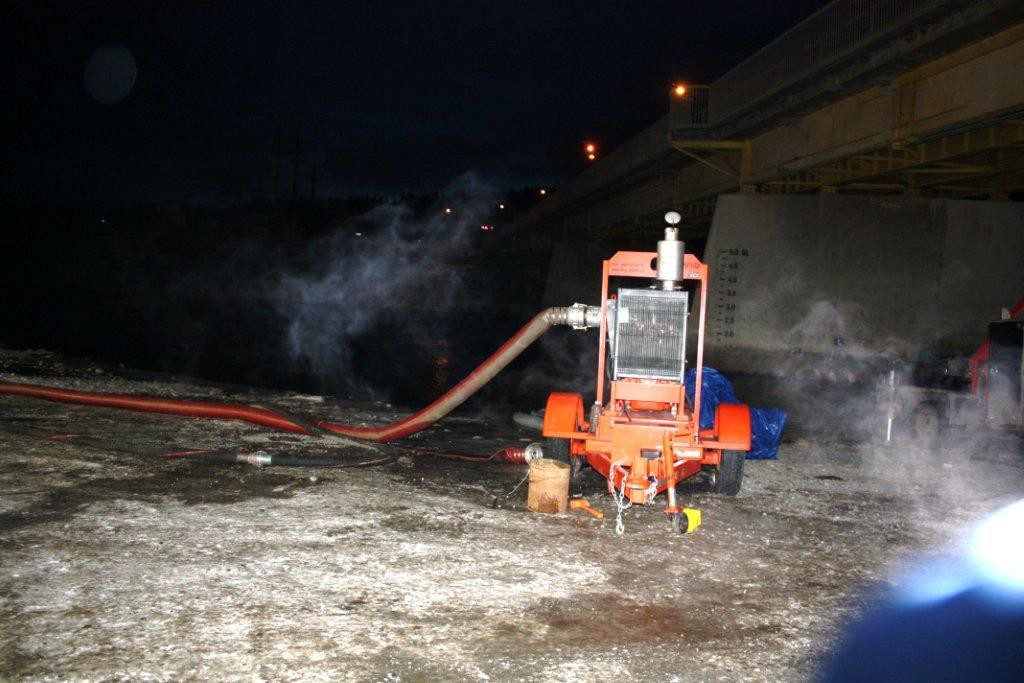
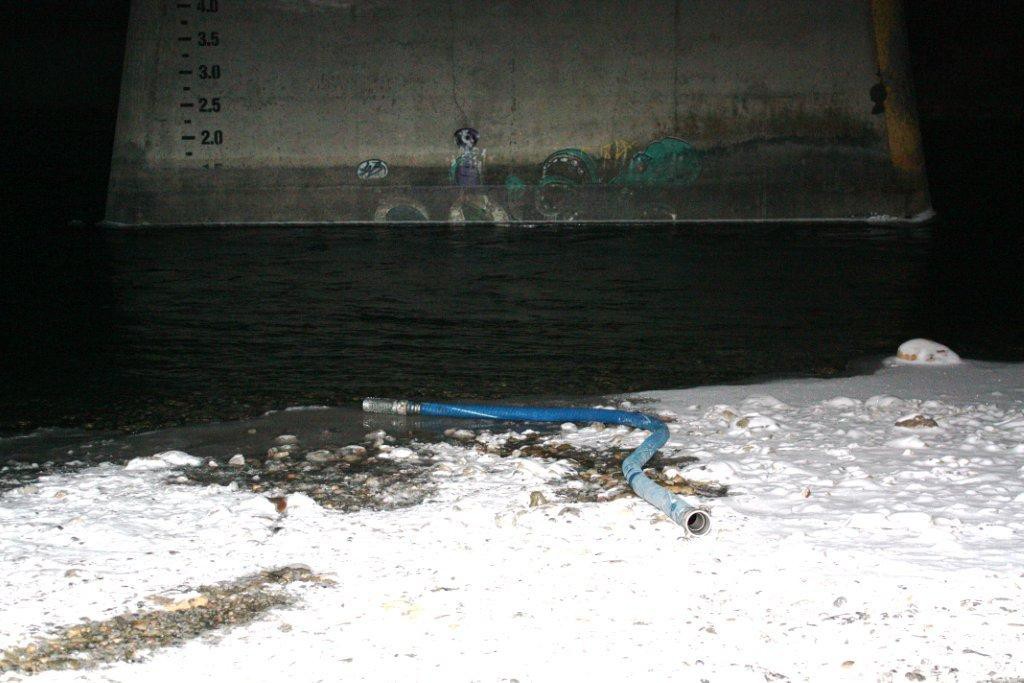
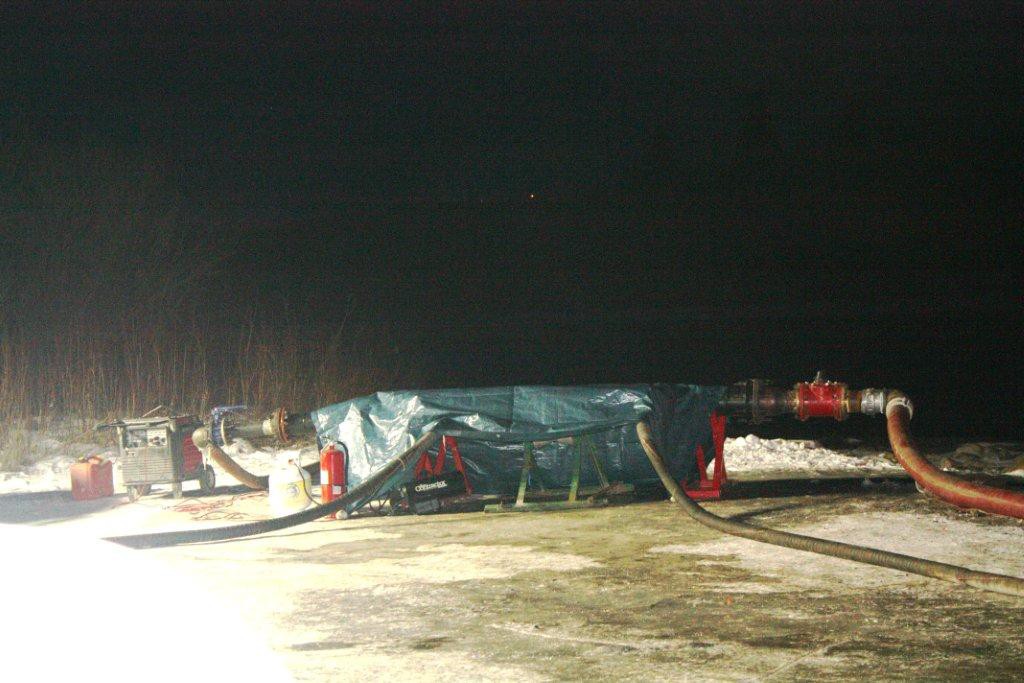
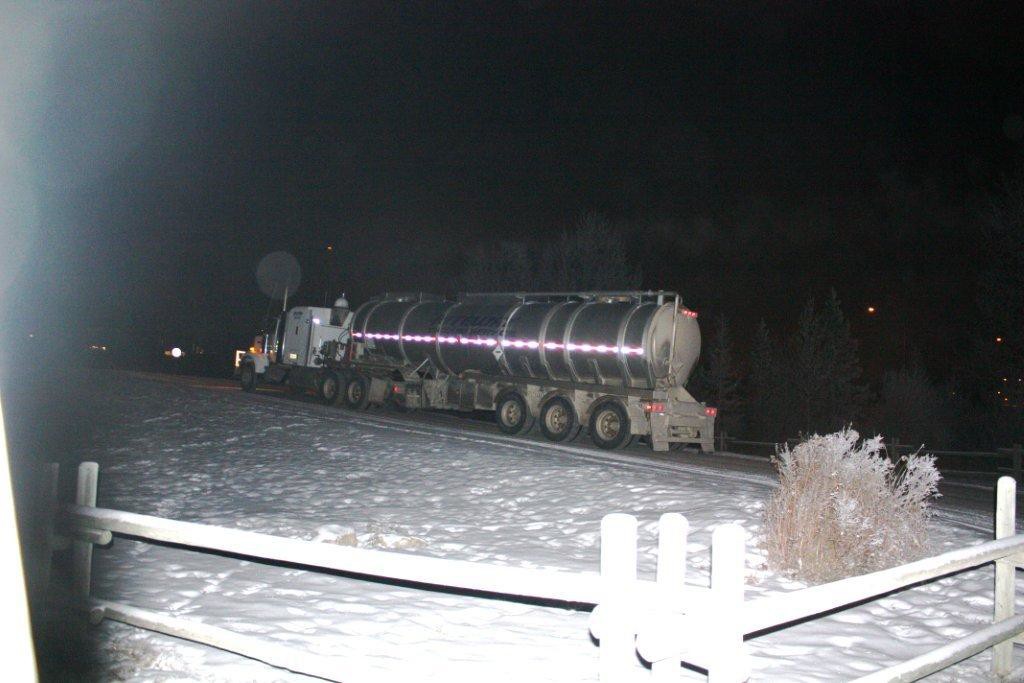
Photos above: Frac’ers taking water from the Bow River upstream of Calgary
Photos below: Frac’ers hoarding water for frac’ing NW of Calgary

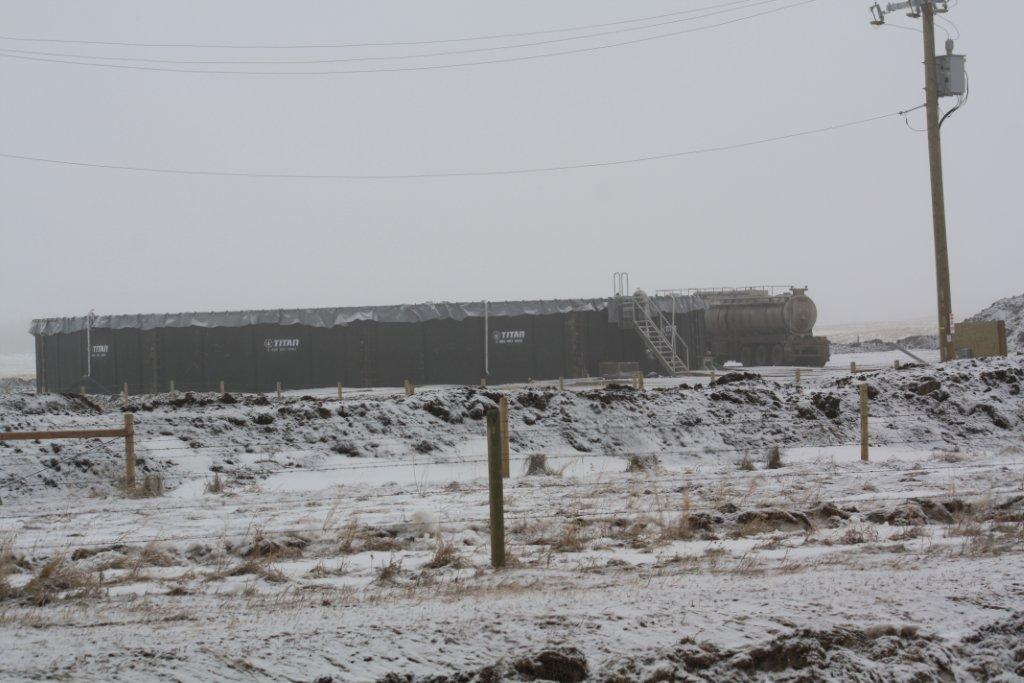
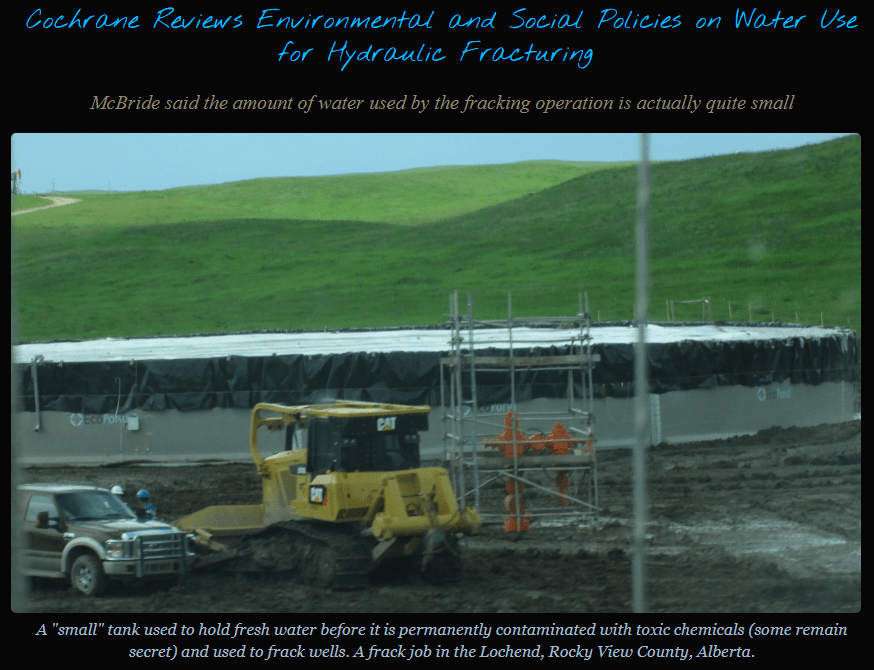
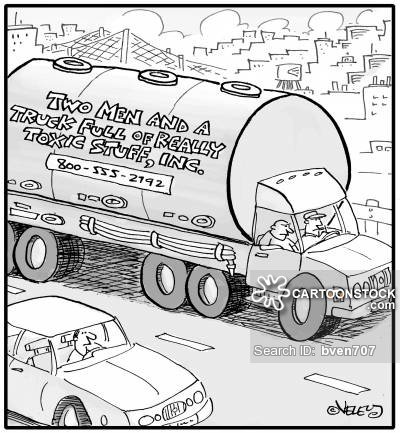
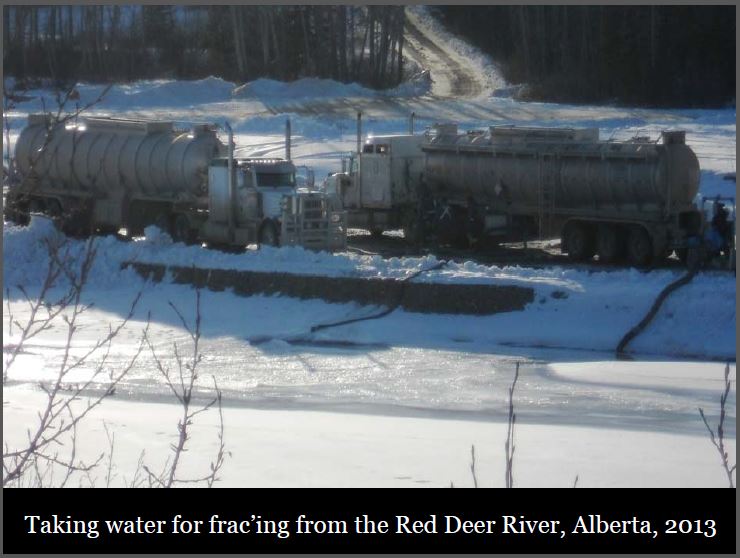
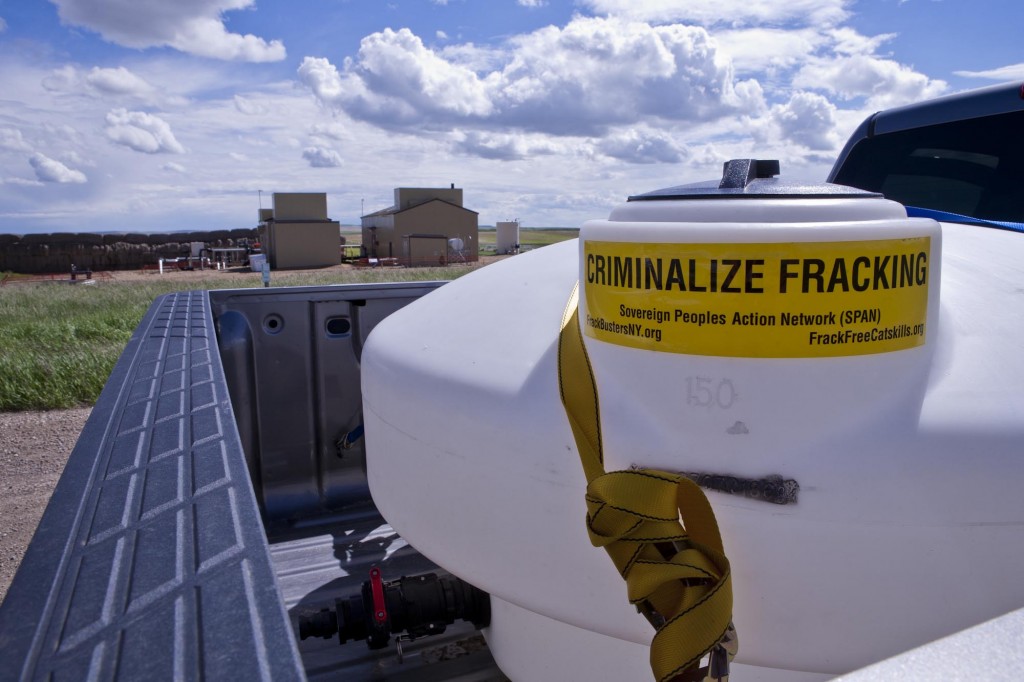
My tank to haul alternate water for my personal use after Encana/Ovintiv illegally frac’d and contaminated Rosebud’s drinking water aquifers, ruining my water well with much fraud and law violations by the regulators and gov’t to help the company get away with it. The Hamlet (I live just west of it), Gleichen, Standard, Rockyford and Redland now get alternate water pipelined from Calgary! Are those rural residents under the same restrictions? What when Calgary goes permanently dry?
![]()
Refer also to:
…
A proportion (25% to 100%) of the water used in hydraulic fracturing is not recovered, and consequently this water is lost permanently to re-use, which differs from some other water uses in which water can be recovered and processed for re-use.
…

Frac’ers in Alberta pay nothing for the water they intentionally contaminate and permanently lose to the hydrogeological cycle.

